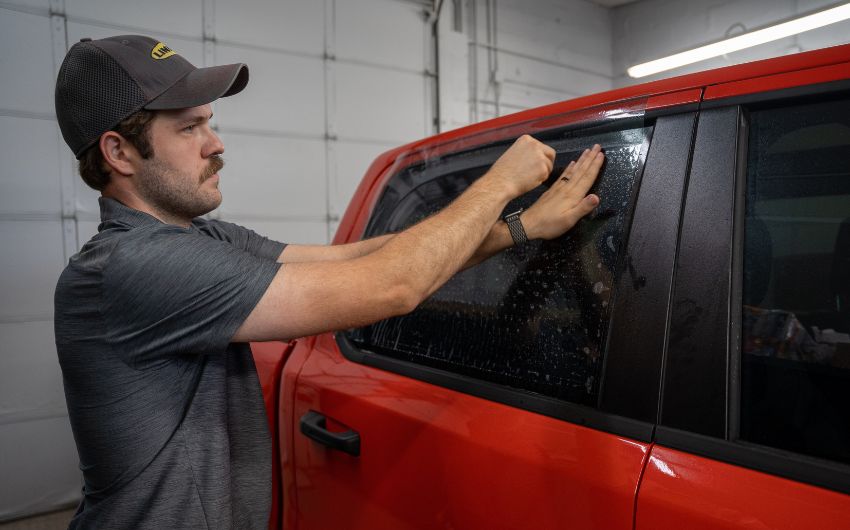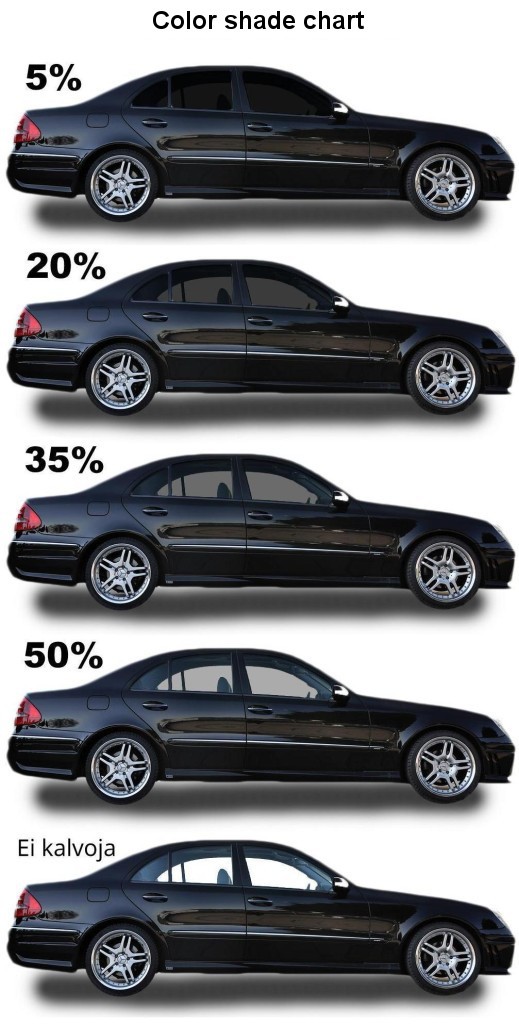Exactly How Automobile Window Tinting Can Raise the Resale Worth of Your Car
Exactly How Automobile Window Tinting Can Raise the Resale Worth of Your Car
Blog Article
Window Tinting Laws and Standards: What You Required to Know Before Tinting Your Cars And Truck
Before waging window tinting for your lorry, it is vital to familiarize on your own with the diverse regulations and guidelines that govern this technique across various states. These guidelines dictate the acceptable degrees of color darkness, commonly gauged by visible light transmission (VLT) percentages, and consist of details stipulations for front windscreens targeted at ensuring road safety. Furthermore, certain jurisdictions may supply medical exceptions for individuals with certifying conditions. Recognizing these intricacies can save you from possible legal implications, but what are the particular policies in your state?
Introduction of Home Window Tinting Laws
Window tinting regulations are often based on variant throughout different territories, mirroring local laws and security factors to consider. These legislations determine the permissible levels of tint darkness and reflectiveness on lorry windows, making certain that drivers maintain appropriate visibility while additionally shielding versus hazardous UV rays and heat.
A lot of policies identify window tinting based upon the Visible Light Transmission (VLT) portion, which suggests the quantity of light that can travel through the home window. Generally, lower VLT percentages indicate darker colors. Legislations commonly distinguish between the front, side, and back windows, with more stringent constraints put on the front windscreen to enhance safety for both the driver and various other roadway customers.
In addition, some territories enforce restrictions on the reflectivity of the color, protecting against excessive glow that can harm presence. Exceptions to these laws might exist for people with particular medical problems needing additional sun security. Compliance with window tinting laws is vital, as violations can result in penalties, mandatory removal of the color, and potential increases in insurance policy premiums. It is crucial for vehicle proprietors to acquaint themselves with regional laws prior to continuing with home window tinting installments.
State-by-State Color Rules
Understanding the specific window tinting guidelines in each state is important for car owners looking for to adhere to the law. Each state in the united state has actually established its very own set of guidelines governing window tinting, which can vary dramatically. These laws frequently determine the permitted levels of tint darkness, the kinds of windows that can be tinted, and any clinical exemptions that may apply.
For instance, states like California have strict constraints on color darkness for front windows, while others, such as New Mexico, may permit darker tints. Furthermore, particular states mandate specific visibility percentages for different home windows, consisting of the windscreen, front side windows, and rear home windows. It is important for vehicle owners to acquaint themselves with their state's laws to avoid possible penalties or charges.
In addition, some states may call for a qualification sticker to be positioned on tinted windows, suggesting conformity with state legislations. Failing to stick to these regulations not only takes the chance of legal effects however can likewise affect safety and security and exposure while driving. For that reason, lorry owners must perform comprehensive study or get in touch with neighborhood authorities to guarantee complete understanding and conformity with state-by-state color regulations.
Allowed Tint Degrees and Kinds
Lots of lorry proprietors might be shocked to learn that enabled color degrees and types differ commonly throughout different states. Each state has established its own regulations concerning the permitted darkness and reflectivity of home window color, frequently gauged by Visible Light Transmission (VLT) portions. VLT refers to the amount of light that can pass via the colored windows; therefore, a browse around this site reduced percentage indicates a darker tint.

Moreover, the kinds of color materials allowed can vary, with some states banning mirror-like or metallic surfaces. It is vital for automobile proprietors to familiarize themselves with their state's particular regulations to make sure conformity. Non-compliance can result in fines, required elimination of the color, or other lawful effects, making it imperative to recognize these policies before continuing with installation.
Medical Exceptions for Tinting
While not all states give allowances for clinical exemptions concerning window tinting, those that do recognize the necessity for particular people to enhance visibility and convenience because of go to these guys clinical problems. Numerous medical conditions, such as lupus, skin cancer cells, and specific eye disorders, can provide individuals particularly delicate to sunshine. These people might need darker tints to secure themselves from hazardous UV rays and glow.

It is vital to keep in mind that despite a clinical exception, there may still be constraints on the level of tint permitted. Conformity with state legislations guarantees that people are both secured and within lawful restrictions. Those taking into consideration clinical exceptions should call their neighborhood Department of Motor Automobiles or comparable authority to recognize the procedures and requirements required to request an exemption effectively.
Fines for Non-Compliance
Failing to abide by home window tinting legislations can lead to substantial penalties, which vary by state. Law enforcement companies are empowered to release citations for automobiles that do not comply with the defined tinting regulations. These fines normally consist of fines, which can range from moderate total up to numerous hundred dollars, depending upon the severity of the violation and the state concerned.
In some territories, repeated offenses might result in intensifying penalties or added fines, such as necessary court looks. Non-compliance might necessitate the removal of unlawful tinting, usually at the proprietor's expense. In severe cases, habitual culprits might encounter suspension view of their lorry enrollment till compliance is achieved.
In addition, insurance coverage effects may arise from receiving numerous citations for home window tint violations. Insurance providers may watch such infractions as a sign of riskier habits, potentially causing boosted premiums or trouble in coverage.
To avoid these penalties, it is critical for car proprietors to acquaint themselves with their regional window tinting legislations and guarantee that their vehicle complies (Window Tinting). This aggressive method not only avoids legal implications but also advertises road safety and security
Conclusion

Many policies identify window tinting based on the Visible Light Transmission (VLT) portion, which shows the amount of light that can pass via the window. Compliance with window tinting regulations is crucial, as offenses can result in penalties, obligatory removal of the tint, and potential increases in insurance coverage premiums.Recognizing the details window tinting regulations in each state is essential for automobile owners looking for to conform with the regulation. These guidelines typically determine the permitted levels of tint darkness, the types of home windows that can be tinted, and any type of medical exceptions that might use.
For circumstances, states like The golden state have rigid limitations on tint darkness for front windows, while others, such as New Mexico, might permit darker tints.
Report this page